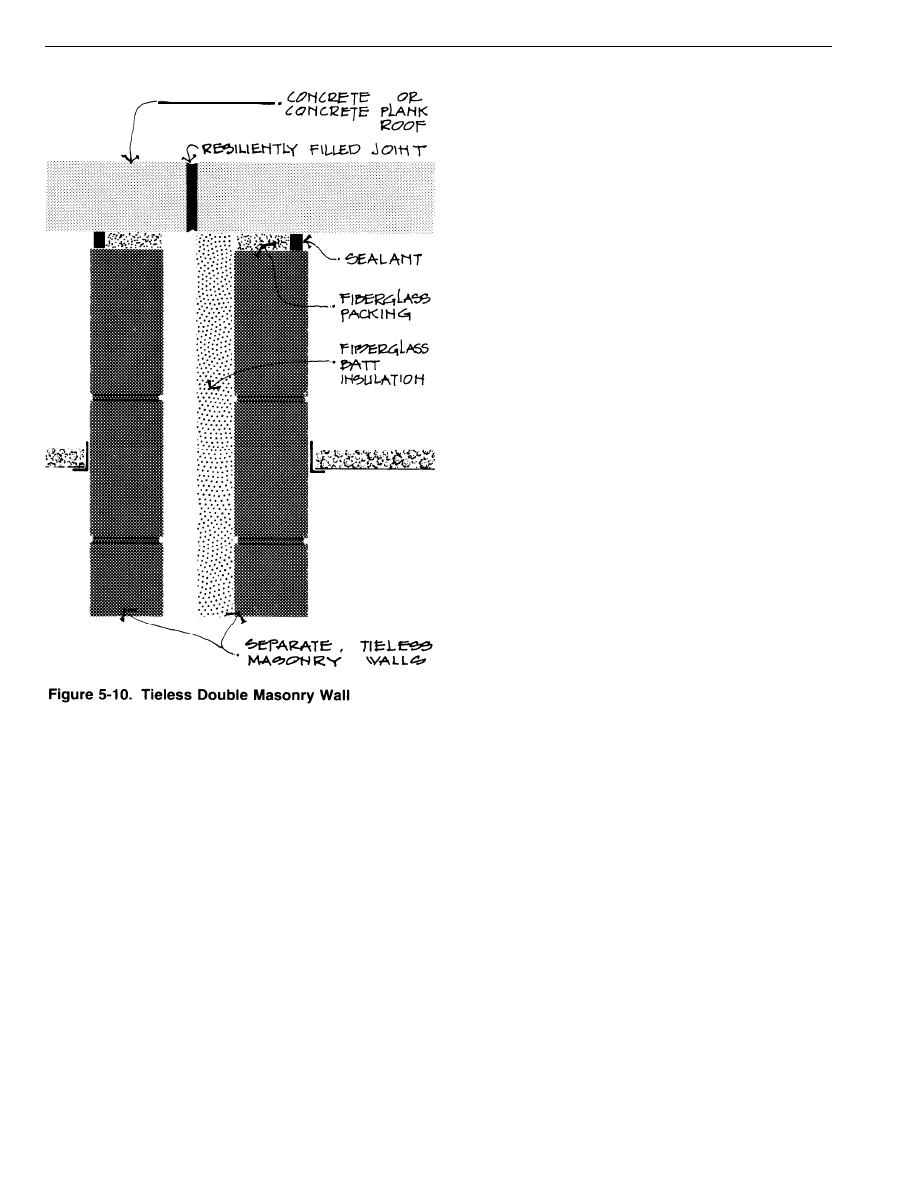
DG-1110-3-119
Design Guide: Band Training Facilities
Practical Approaches for Accoustic Construction
March 1983
C. Main Rehearsal Room, Large Group
Practice Room and Control/Recording -
Booth
The recommended background noise level in these
spaces is NC-25, though up to NC-30 may be acceptable
in the Large Group Practice Room. Isolation requirements
are more stringent for these uses than for those already
discussed. These spaces are all usually placed in close
proximity, so wall constructions on the order of STC 75 may
be needed. This much isolation is quite difficult to achieve.
In practice, placing the Control Booth between the Main
Rehearsal and Large Group Practice is best. The booth
will then form a buffer between the active music rooms (the
isolation between either room and the booth is in any
case compromised by the window).
Solid masonry, with resiliently furred gypsum-board skins
on each music room wall, will be adequate for wall construc-
tion between these spaces (as already discussed in Fig-
ure 5-8). Such walls do not achieve the best performance,
but are compatible with the required windows. (The win-
dows are still weaker than the walls, but their small area
tends to transmit less sound than the larger area of the
walls.)
Where Large Group Practice or Main Rehearsal Rooms
are directly adjacent to each other or to other music rooms
(see Figure 5-10), construction should be tieless double
masonry walls with acoustical batt insulation between, with
a concrete (preferable) or concrete plank roof. The insu-
lation also aids in preventing inadvertent mortar bridges
between the layers, which would compromise the isolation.
The concrete roof should be discontinuous (or shielded by
an STC-rated ceiling) to avoid flanking.
5-12


 Previous Page
Previous Page
